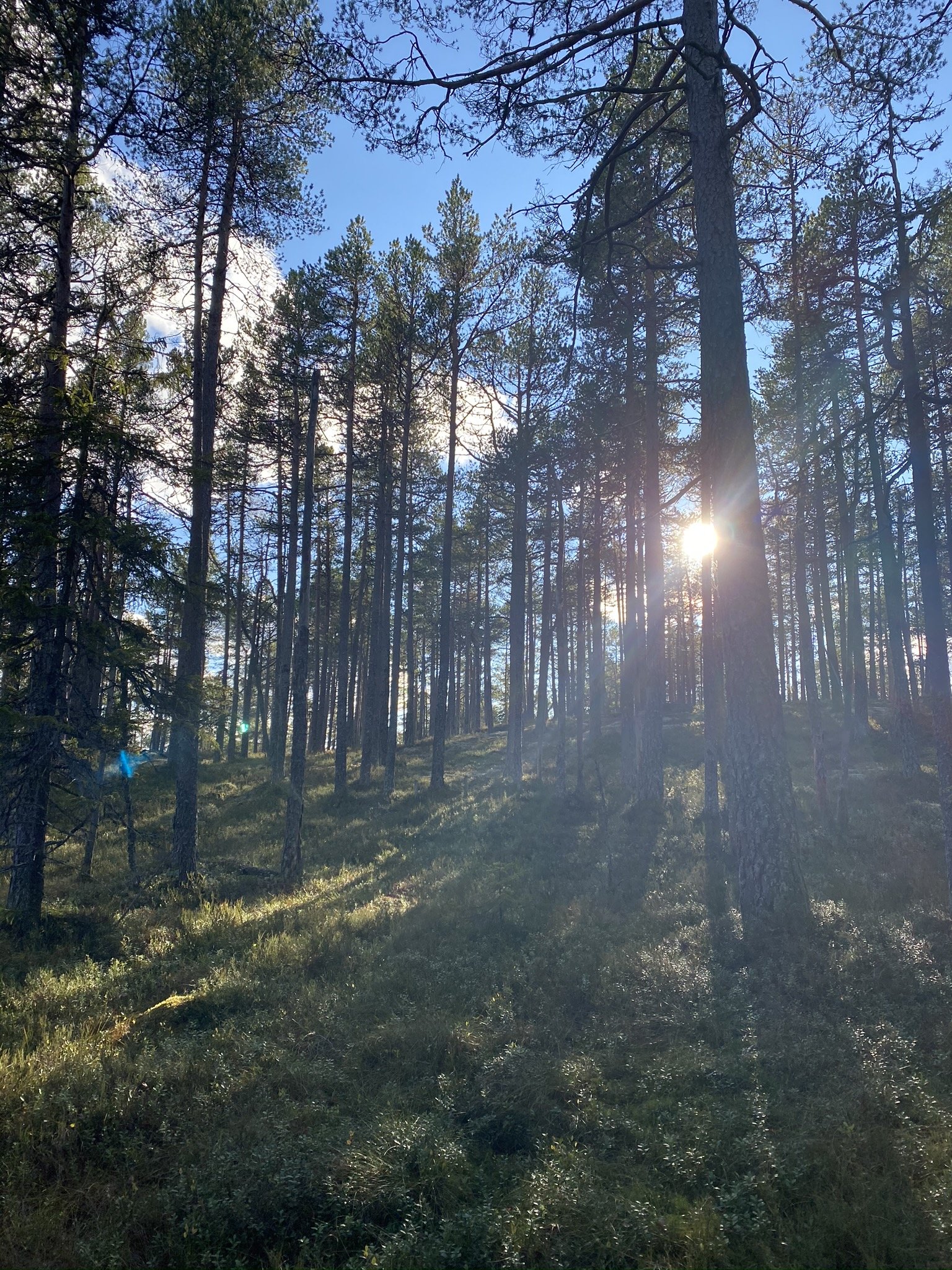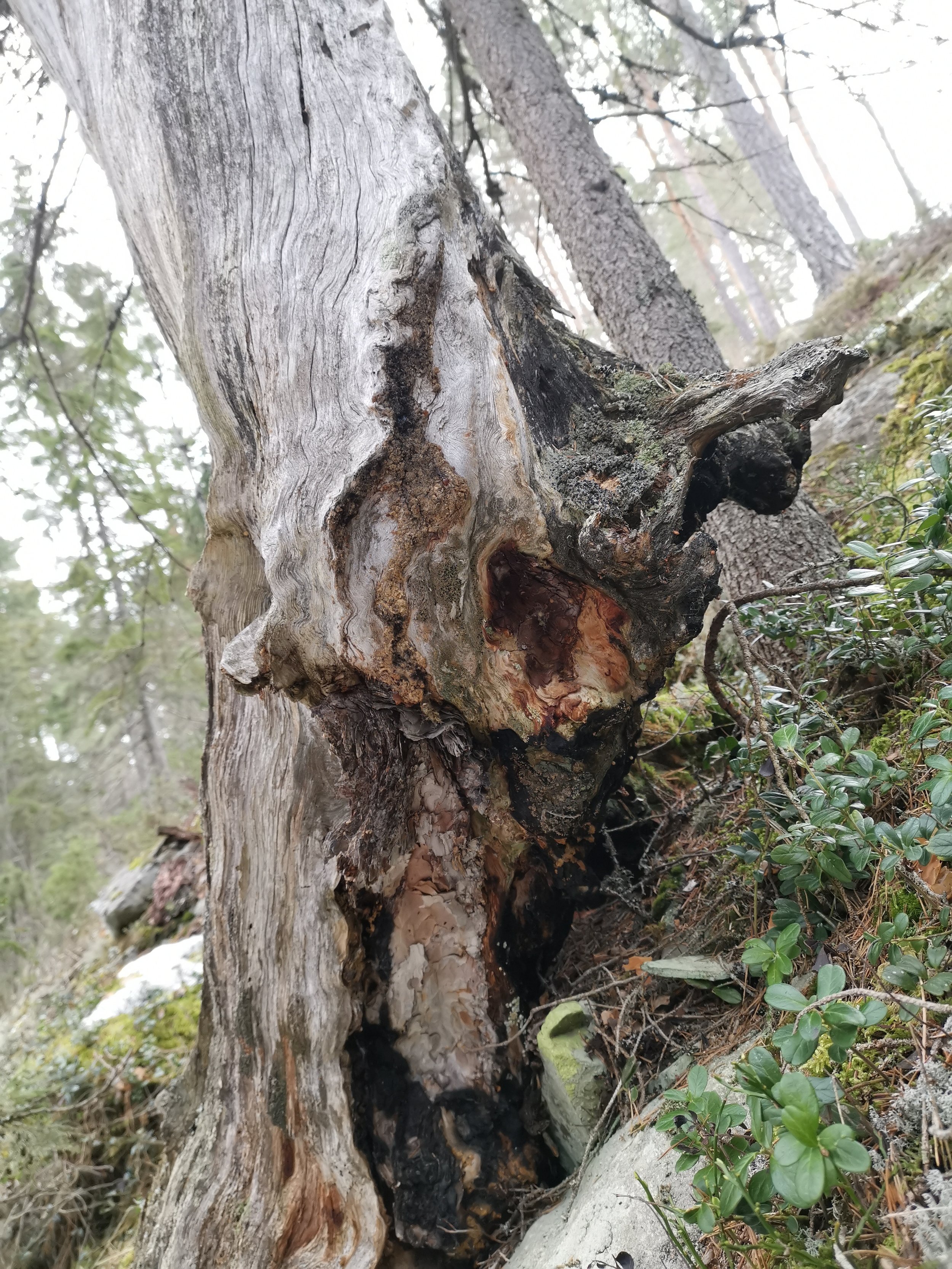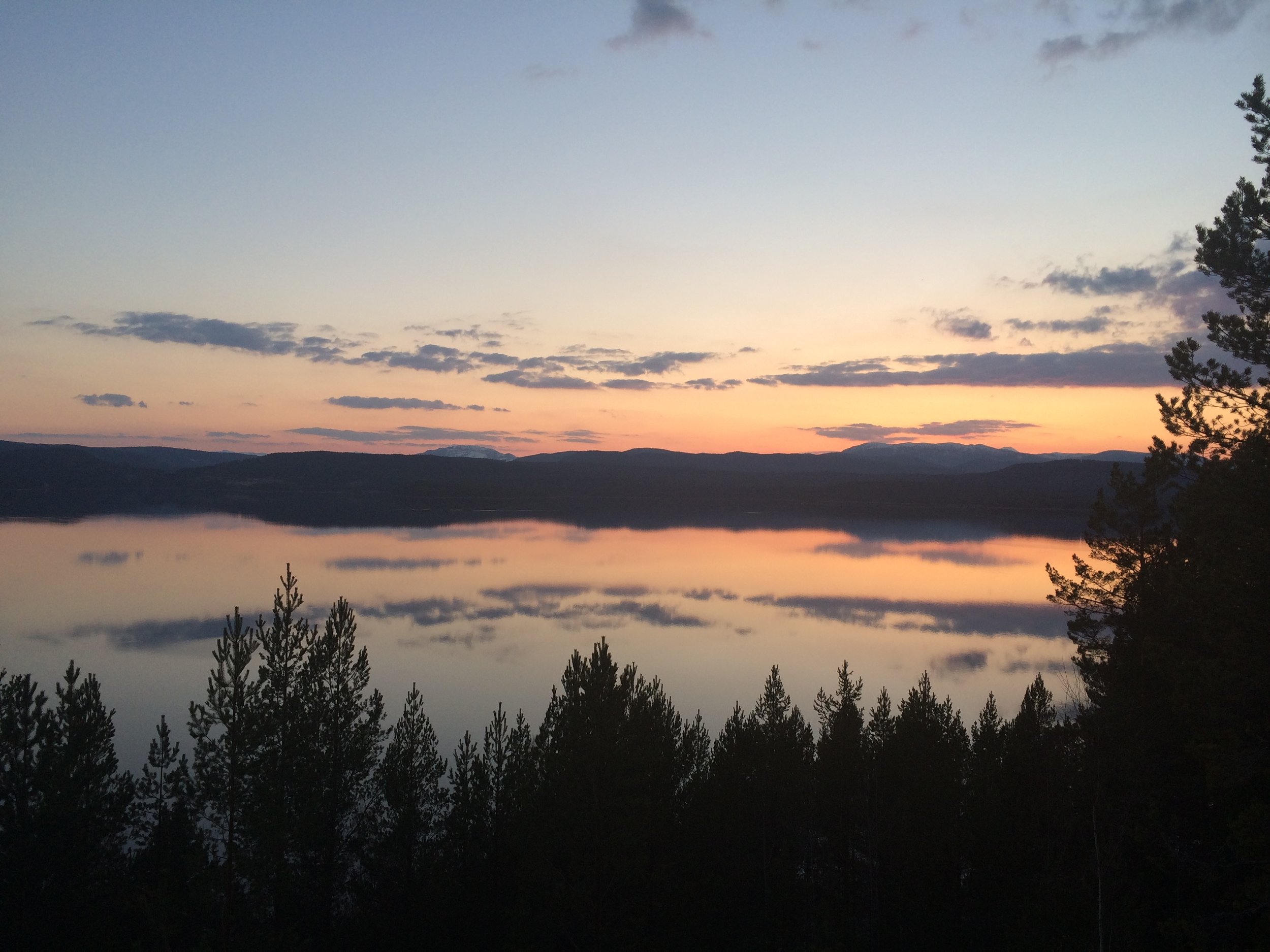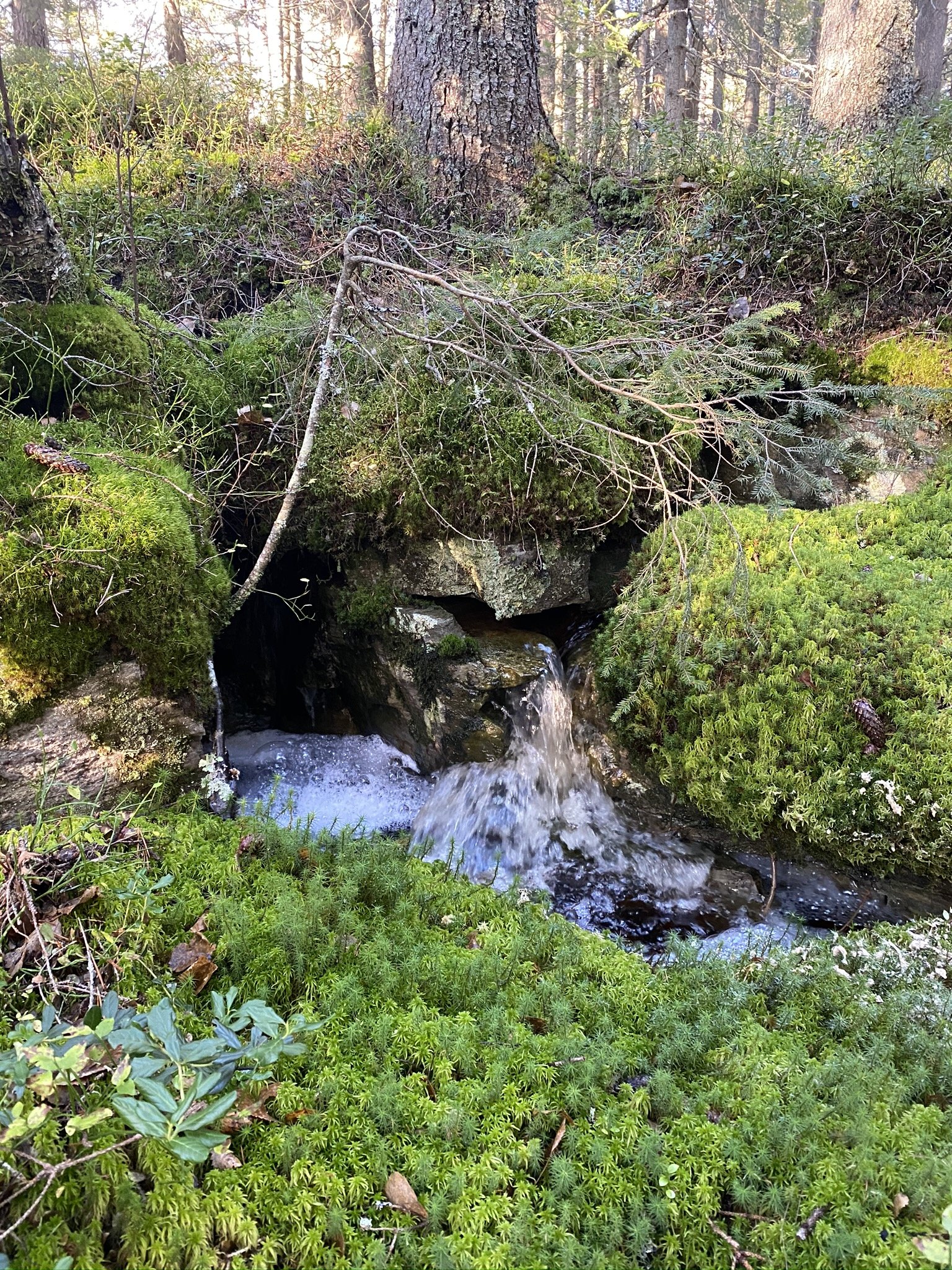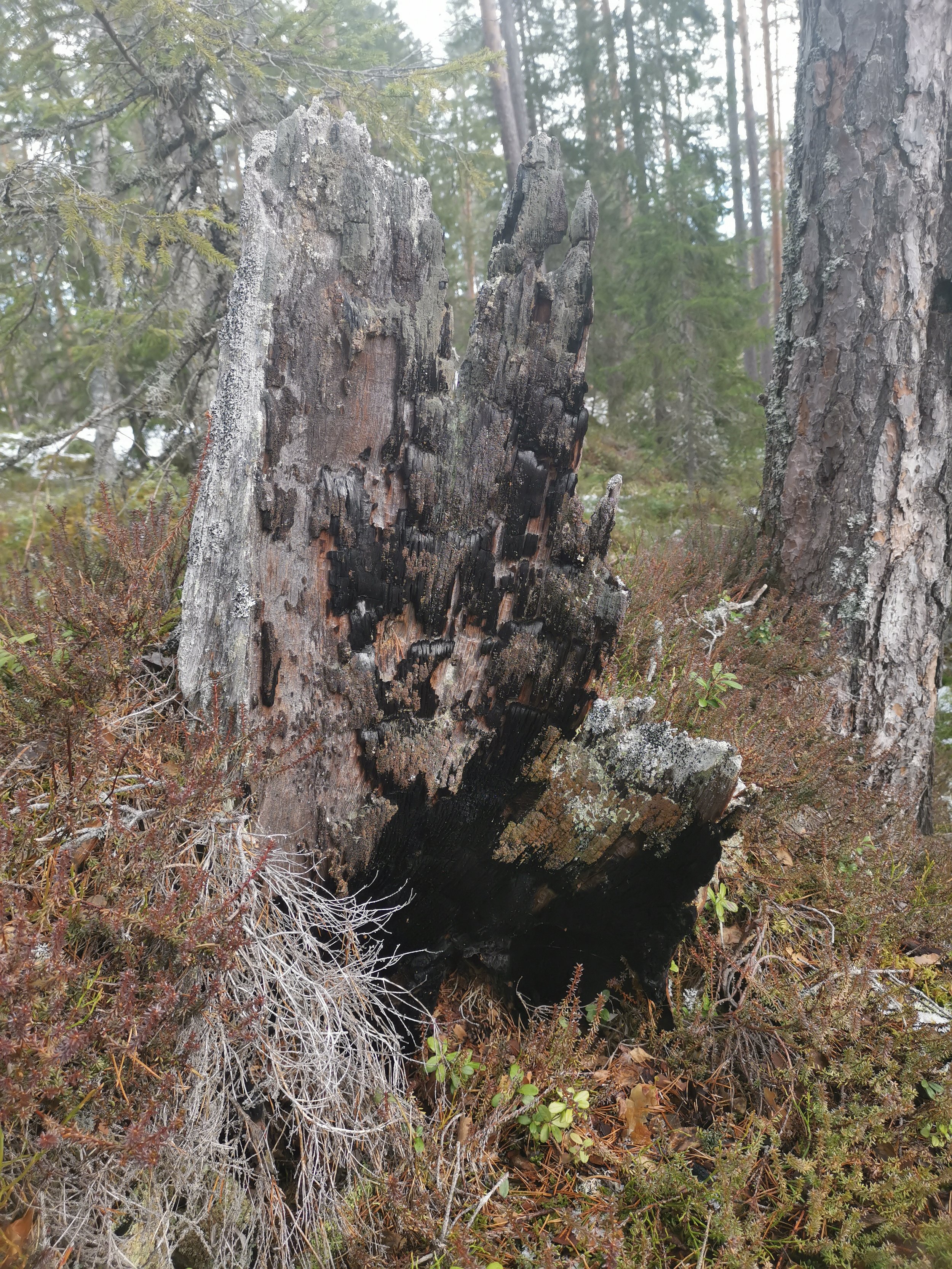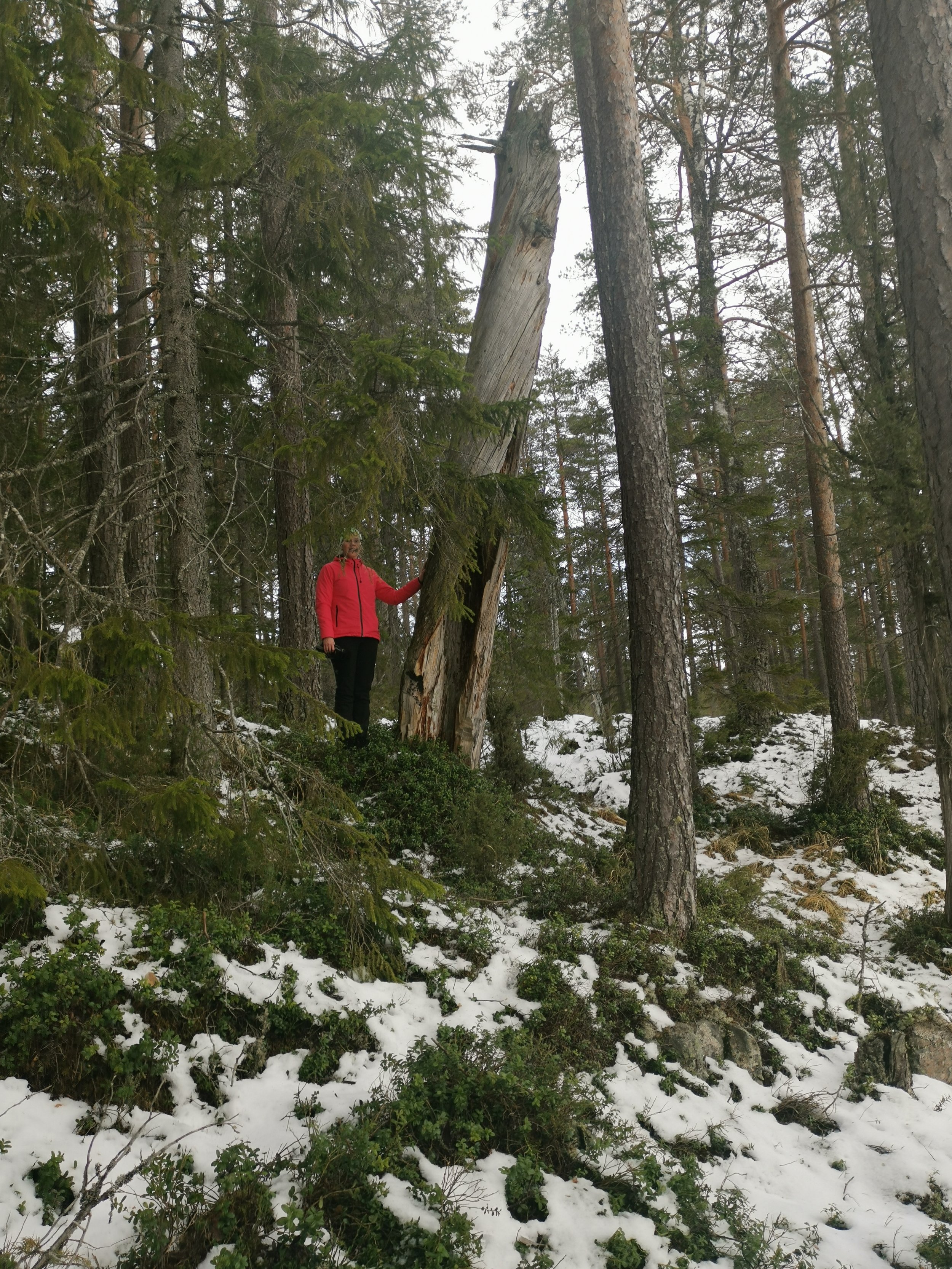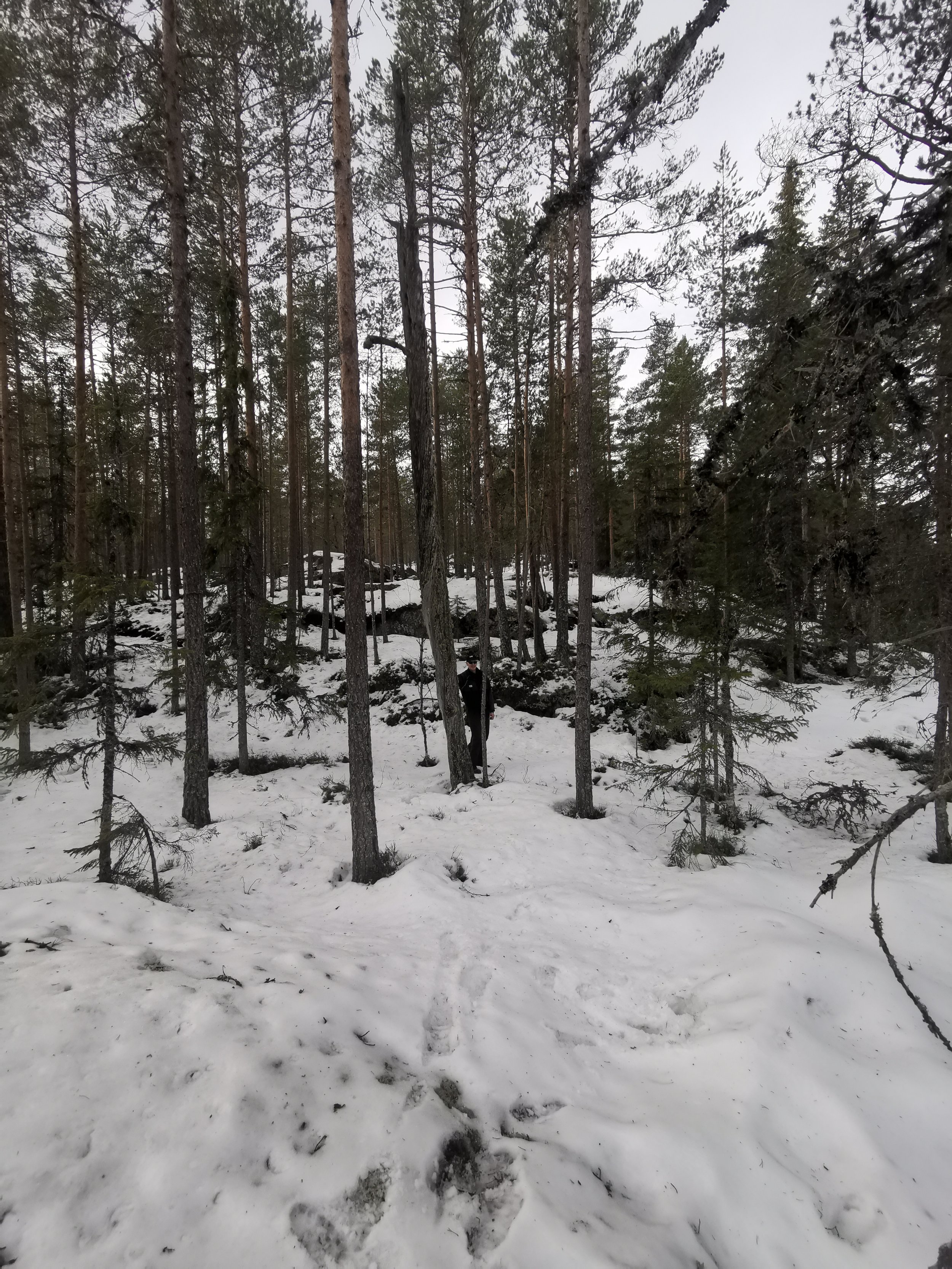Conservation area Bjønnestille
The forest around Follsjø has been much discussed in the media in recent years, most recently as the pine forest's answer to "Jurassic Park". Notodden is a forestry municipality and there has been active forestry in the area for many centuries. In recent years, biologists have been making pilgrimages to the area and discoveries have been made of species that were previously thought to be extinct.
In the middle of the picture is Bokkeryggen, which runs well from Bolkesjø to Follesjø. The water on the right is Bokke. Photo: Reidun Grønstøl
The voluntary protection scheme was introduced in 2004. The scheme was a solution proposed by forest owners to reduce the previously high level of conflict between the authorities and forest owners in connection with the establishment of new protected areas. The scheme means that forest owners themselves offer forest areas for protection and if the area has natural and environmental qualities that the protection authorities are interested in, the process can proceed.
The Bjønnestille area is located on the slopes down towards Follsjø on the east side of the lake. The area was adopted by the Storting in a conservation decision on December 17, 2021. As part of the conservation process, Sigve Reiso at Bioforsk prepared a conservation plan on behalf of the State Administrator of Vestfold and Telemark. Here, the area is described as follows;
Bjønnestille encompasses a medium-sized area dominated by older and fire-affected lowland pine forest in a very important region for this forest type. Pine is the dominant tree species in the area throughout, with a somewhat increased proportion of spruce along streams, ravines and sedges. In addition, birch and juniper are common in the pine forest, and in places also some aspen, rowan and willow. Blackthorn stands in some moist areas. The summit area and the upper slopes are home to mosaics of poor lichen, heather and berry heather forest, interspersed with fresh sedges with weakly developed tall perennial forest. The lower and steeper slopes towards Follsjåveien also include low herb-berry heather forest in association with seasonally moist sedges, in a mosaic with pine-dominated blueberry forest. Vascular plants such as black pea, blue pea, broadleaf bluegrass, nightshade, spotted pigweed, blood stork's beak and blue vetch are found here, indicating rich soil conditions. Scots pine forest is listed as red-listed under the type of chalk and Scots pine forest (vulnerable - VU).
The core areas (5 boundaries) house poorly developed natural forest, where weakly multi-aged forest with scattered older trees and elements of both standing and lying fresh dead pine wood is typical. In places, some keloe elements are found. The continuity of dead wood appears weak in the protection proposal seen in isolation. Both keloe elements and old trees throughout the study area have traces of previous forest fires. A smaller field to the north within core area 5 also has traces of a more recent fire (10-15 years old). Other important key elements for biodiversity include scattered old birch and aspen in the pine forest, as well as old columnar pine.
The core areas have scattered occurrences of natural forest species typical of the area. These include both heat-loving lowland species, fire-related species and more widespread natural forest species. Typical lowland species include bark beetle infestation by Orthotomicus longicollis (RE) on wood spikes, findings of the wood cicadas Cixidia lapponicus and Cixidia confinis (VU) in dead pine wood, woodworm infestation by the woodworm moth (EN) on old birch and the fungus rustskin (VU) on dead pine. Coarse columnar pine is also a typical lowland element, and associated with such lichens the species narrow-headed needle (VU) and pink tussock lichen (VU) were detected. More general natural forest species associated with pine include light and dark fire-stump lichen (both VU), as well as tyrin needle (NT), shiny needle (NT), pine scale (NT), root needle (NT) and hornskin (NT). Other species include the signal species pine woodruff and ochre-pored woodruff in the protection proposal. Bjønnestille covers several forest protection gaps. The entire area contributes to the general lack of lowland forest. Within parts of the core areas also for biological old-growth forest. Of the deficiency habitat types/responsibility types, old pine forest is included. The total gap fulfillment is assessed as high.
The Storting decided in 2016 that 10% of the forest in Norway should be protected. After the protection decision in the Storting on 17.12.2021, over 5.1% of all forest is protected, and slightly over 3.8% of productive forest.


